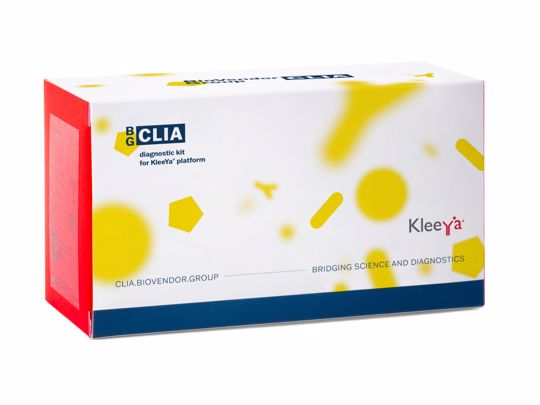CLIA TBE Virus IgM
Chemiluminescence kit for the detection of IgM antibodies to Tick-borne encephalitis virus in human serum or plasma.
Chemiluminescence kit for the detection of IgM antibodies to Tick-borne encephalitis virus in human serum or plasma.
| Catalog Number: | CL-TBM050 |
|---|---|
| Size: | 50 tests |
| Regulatory status: | CE IVD |
| Clinical topic: | Infectious Diseases |
| Diagnostic panel: |
Tick-Borne Infections Vaccination Monitoring |

Tick-borne encephalitis (TBE) is a viral infectious disease caused by an arbovirus from the family Flaviviridae. The infection is characterized by a natural focal distribution. Reservoir hosts of the virus are forest animals, humans are infected through tick bites. Most TBE cases occur from summer to autumn. Up to 70 % of TBE infections are clinically inapparent. If manifested, the illness non-specific flu-like symptoms occur after an incubation period (3-14 days). After several days of remission, the second (neurologic) phase of the disease develops. An acute stage of tick-borne encephalitis lasts 1 to 3 weeks. More severe course of the disease, often with lasting ill effects, can be observed in senior patients.
The diagnosis of tick-borne encephalitis is based on anamnesis, clinical picture, and results of laboratory tests, which include biochemical and cytological investigation of liquor and serological detection of specific IgM and IgG antibodies in serum. The IgM antibodies are the serological marker of acute infection and their production can last up to 10 months. The IgG antibodies protect the organism against a new infection, and they can be detected over several years after the past infection or vaccination.
| Assay time | 40 min |
| Assay stability | 30 days on board stability / In use stability until the expiration date at storage temperature 2-8 °C |
| Sample matrix | Serum, Plasma |
| Sample volume | 10 µL |
| Sample stability | 7 days at 2-8 °C, 24 months at -20 °C |
| Measuring range | 3 - 380 U/ml |
| Assay/kit content | Reagent Cartridge with specific reagents for the assay, magnetic particles, calibrators |
| Complementary products | Anchor® Tips, Stackable Cuvette, KleeYa Trigger Pack, KleeYa Wash buffer |
| Note | The kits are CE-IVD certified and intended for professional use. |